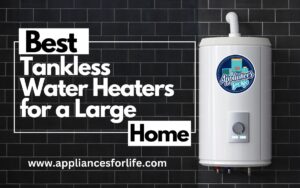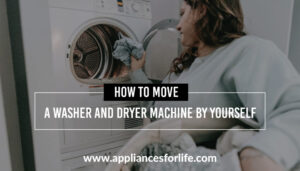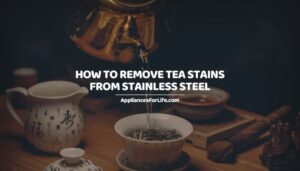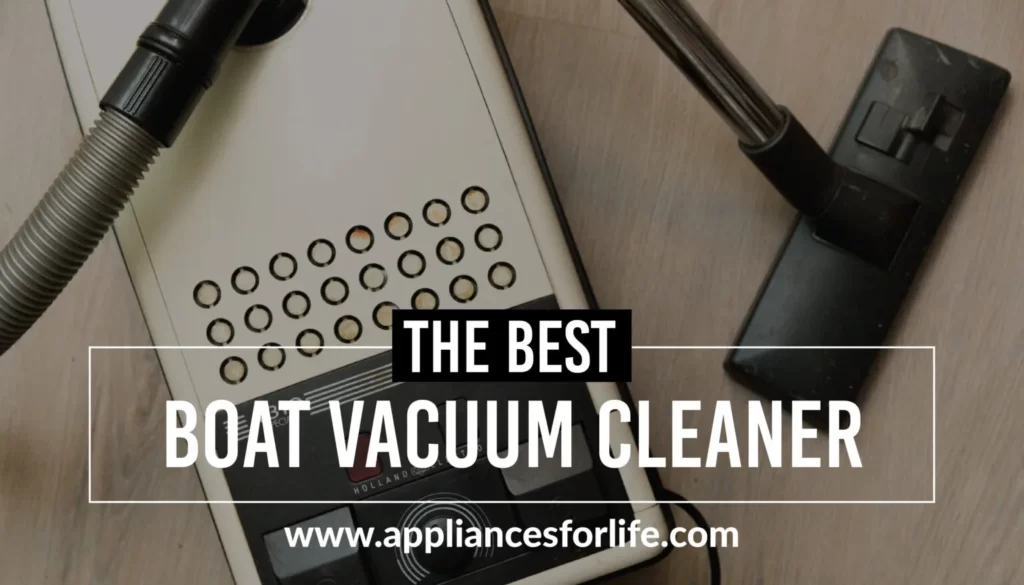- A vacuum cleaner is a high-end innovation that has revolutionized the way cleaning is done in the home. A vacuum cleaner is incredibly useful in serving numerous common and uncommon functions. Its versatility is notable in that, by procuring a compact and portable vacuum, you can achieve various cleaning tasks like getting rid of grime from your upholstery, effortlessly picking furs from your rud, and dust from the crevices of your Air Conditioner unit, and so much more.
- Just like you clean your cars with a vacuum cleaner, you can also get your boat looking squeaky clean with a vacuum cleaner. This article explores the parts of a vacuum that enable it to perform suction and further provides a list and reviews of vacuums that fit this purpose.
You may clean so spectacularly that no dirt becomes visible, but even at this level of cleanliness, your house or your boat, in this case, may still be filthy, and this is because most of the dirt in your house, on that rug, is too small to be seen. In actual fact, it is possible to live with this dirt in our houses; after all, we can’t see them. However, having your space totally spotless is still good; this is where a vacuum cleaner is needed. Indeed, a quick run around with the vacuum cleaner is enough to keep us happy. Twenty-first-century homes are packed with dozens of appliances and gadgets, but vacuums are one of the few most of us simply couldn’t live without. We all know vacuums suck up dirt—but how exactly do they work?
Table of Contents
ToggleWhy are they called vacuum cleaners?
If you are trying to understand how a vacuum cleaner works, you may want to start by understanding why it is so-called. There is no particularly logical reason for the term ‘vacuum cleaner’ because, in the actual sense of things, there is no vacuum involved in the operation or the parts of a vacuum cleaner. There is a difference in air pressure, but nowhere is there an absolute vacuum.) A vacuum cleaner uses suction energy; in fact, ‘ suction energy’ would be a better name for this device. Mind you, Vacuum cleaners do not even consume a lot of wattage to serve this function.
Perhaps, the best way to understand how suction works is by using the tissue paper and comb trick. You may try this if you haven’t before now- Wrap a piece of tissue paper around a comb. Breathe out as far as you can and hold your breath. Place the comb and paper against your mouth. Now lean against a dusty armchair and press your mouth and the comb against it. Breathe in sharply so, effectively. You are breathing straight through the comb. Take the comb away from your mouth and inspect the tissue paper. See how dirty it is!
Now imagine how much dirt you’ll have been able to extract if you could keep this up for as long as one hour. What will happen is that this extracted dust will build up on the tissue paper to the point that air will no longer flow through it properly. Now you see that your ability as a ‘human vacuum cleaner’ is greatly impaired- it is impossible for a human to maintain a suck level of powerful suction the whole time. Now, what this teaches is that, for a vacuum cleaner to work effectively all the time, it has to maintain powerful airflow. Hence, if the dustbag or the filters are clogged up, airflow will drastically reduce, and it won’t be able to extract dust. And this is the major problem for most bagless and cyclonic vacuum cleaners.
The Essential Parts Of a Vacuum Cleaner and How They Work
Like any machine, a vacuum cleaner has many parts working together to ensure proper cleaning for all dusty surfaces. The interconnectivity of these various parts is necessary to get the best results. The parts of a vacuum cleaner and how they work are treated in the section below
Motor
The motor of a vacuum cleaner is its heart, the part that keeps it running. Without the motor of a vacuum cleaner, it will not even start, to say the least. This is probably the reason why the motor is the heaviest part of the machine. It is attached to a fan where the air is forced over to expel the exhaust. Your vacuum cleaner’s suction/cleaning level depends largely on your motor’s capacity. Hence, to determine the cleaning capabilities of your machine, you should be aware of the power of your motor, and this is one of the things you should look out for when buying a new vacuum cleaner or going for your first. Vacuum power is measured in watts and has amp ratings that determine the amount of electrical current used while operating. Find a high wattage, high amp vacuum, and you will likely have the cleanest house on the block.
The Internal Fan
The vacuum cleaner’s motor spins the internal fan, which is located right behind the rotating brush, and works with it. the main function of the fan is to guide dirt and debris through the filter and into the dust bag.
The Filter
Your vacuum filter is essential for separating heavy, solid objects from dust. Why is this important? Because large objects can often break parts of your vacuum. It is extremely important to have a good filter. Fan blades can get damaged, and holes can occur in the dust bag if hard debris passes the filter. The filter is like your vacuum’s shield from a sword. You can choose which type of shield you want to use based on what you usually use your vacuum for. There are 2 types of filters, namely the Post-Motor Filter and the Hepa filter.
It is important that your vacuum cleaner releases clean air at the exhaust, as a bye product. However, if dirt particles are allowed through the air sucked in, that goal may not be achievable. This is why the post-motor filter becomes useful- it stops particles from entering the air after being sucked up by your vacuum cleaner. The Hepa filter, on the other hand, captures almost 99.9% of particles, even the minutest ones, so it is a great option for you if you suffer from allergies. All those dust microns and pollen that make you sneeze and cough will get trapped in a HEPA filter.
The Power Source
There is a power source, a power source from which energy is fed to the vacuum cleaner’s motor. This power source is usually in the form of a rechargeable battery or an AC power cord that plugs into the wall. A battery power source is preferred to the latter mostly because it affords you some portability; your vacuum cleaner will be lightweight and have a compact design. However, the negative side to this is that the vacuum cleaner may not be able to handle heavy tasks. Hence, for bigger jobs, you may want to choose a vacuum with a continual source of power from a dedicated wall plug-in to avoid draining the battery before you are finished cleaning. Because remember, for your vacuum cleaner to work as it should, you need a constant supply of energy.
By and large, Next time you are vacuum shopping, think about all the parts of this important cleaning tool and choose a vacuum that will work best in your environment. Ask a vacuum expert at the Vacuum Specialists to answer any questions about filters, fans, and motors. After all, your vacuum is essential to clean, dust-free living.
On to the Working Of These Parts
Vacuum cleaners use a simple yet efficient means to get rid of dirt and dust on surfaces. Now, because of this high-end invention, we do not need to do the cleaning of this nature anymore by hand- it is a relatively more efficient way of cleaning dust and dirt because it is fast. It uses nothing but suction. The vacuum whisks away dirt and stores it for disposal.
Negative Pressure
The simplest way to understand how a vacuum cleaner uses negative pressure is to imagine it is straw and how it is used to extract fluid from a container. Straw is used to create some sort of negative pressure that pulls liquid content into your mouth, while your mouth is the mechanism for creating this pressure. Negative pressure simply means pressure lower than that of the surrounding atmosphere. Like in space films, where a breach in the spaceship’s hull sucks people into space, a vacuum cleaner creates a negative pressure inside, which causes airflow into it.
Electric motor
Vacuum cleaners use an electric motor that spins a fan, sucking in the air – and any small particles caught up in it – and pushing it out the other side, into a bag or a canister, to create negative pressure. You might think then that after a few seconds, it would stop working since you can only force so much air into a confined space. To solve this, the vacuum has an exhaust port that vents the air out the other side, allowing the motor to continue functioning normally. Without this exhaust port, you will certainly need an appliance repairs kit for incessant repairs.
Filter
The job of a vacuum cleaner is to pick up dirt and grime. it even does this better by picking some tiny particles of dirt that are almost invisible to the eye. While the larger dirt can be seen, it is hard to see the tiny ones. Hence they are easy to inhale, and if inhaled, it can cause serious health issues for the lungs. Vacuum cleaner manufacturers have envisaged this problem, and most vacuums have been equipped with a fine filter such that even when the bag or canister fails to trap tiny dirt, they won’t be able to escape the HEPA filter (High-Efficiency Particulate Arresting)- It removes all the dust and the air coming out of the vacuum becomes safe to breathe in.
Attachments
The power of a vacuum cleaner is determined not just by the power of its motor but also by the size of the intake port, the part that sucks up the dirt. The smaller the size of the intake, the more suction power is generated, as squeezing the same amount of air through a narrower passage means that the air must move faster. This is why vacuum cleaner attachments with narrow, small entry ports seem to have a much higher suction than larger ones.
What You Need To Know About Vacuums for Boats and Sailboats
You don’t want extra weight on your boat. Hence, a vacuum cleaner used on a boat needs to be lightweight and compact so that it does not add unnecessary weight to your boat. Also, whether the vacuum is corded or not, it should serve you fine- If it is corded, it will you would not need to worry about battery life as you get a constant supply of power to it. If, on the other hand, it is not corded, it means its the battery will make it even lighter and more easily maneuverable.
Moreover, remember that the most important component of a vacuum is its motor. This means that the more powerful the motor, the better the vacuum’s pressure, suction power, and airflow. But the cleaning ability of a vacuum doesn’t depend only on suction power. Other factors influence the cleaning ability, such as volts, watts, airflow, filtration, capacity, and horsepower. So, let’s continue and see the best models in the market.
Best Board Vacuum Cleaners
Cordless vacuum cleaners are often preferred to the ones with cords because they can be controlled easily. They can also be stored conveniently without any hassles; however, being cordless means, it uses batteries. If you must use batteries, it’s recommendable to prefer models that work with lithium batteries because they last longer and provide consistent suction power.
Dyson V7 Cord-Free
The Dyson V7 may be quite expensive, but it is certainly a good buy when you consider its top quality. It is cord-free, and it stores a lot of energy. It also has excellent performance for a vacuum cleaner. It is strong, but because of its maximum suction power, its battery may not last longer than 20 minutes when it is on a high. However, you can get an additional battery pack as you use this vacuum cleaner.
Dewalt Portable 20V Max
A small and practical vacuum with a wet/dry washable filter also has a well-proven battery lifespan. The DeWalt 20V MAX is a good vacuum choice that will keep your boat’s or sailboat’s interior. It comes with a heavy-duty latch that secures the holding tank when the vacuum is in use and releases easily when you want to empty and clean out the tank. A good thing about this vacuum is that it is made by Dewalt, one of the best appliance brands out there. It is one of the appliances that emerged in the post-war era.
Eureka RapidClean, Cordless Vacuum Cleaner
This vacuum cleaner is a highly efficient cleaner, with a digital LED headlight and a convenient stick for handling. It is also cordless. It cleans efficiently, in that the latest motor technology powers it. Rapid Clean makes cleaning convenient and thorough. It lasts relatively long, as you can boa t of 4o minutes runtime, and you can easily switch it to maximum power through fingertip controls to increase suction for better cleaning on carpet and rugs.
Dyson V6 Car + Boat
Dyson models are considered the best vacuum brand for sailboat use, and you really get what you pay for. This model also removes all dust & hair, doesn’t produce too much noise, and can operate for up to 20 minutes. This color is also my favorite! It is the most pricy option on the list and honestly too expensive for me to buy, but I was very satisfied with the one I tried. Also, I know that many sailors and boaters want the best product and don’t really care about the price, so I should include it on the list anyway. If you know very well how to use a car vacuum cleaner, using this vacuum cleaner will never be an issue for you.
FAQs
Do I need HEPA Filter In my Vacuum cleaner?
Yes, you do. You need a high-efficiency filter in your vacuum cleaner if its use does not bring untoward health benefits to you. A vacuum cleaner sucks in the dirt through negative pressure. Most of this dirt and grime are visible and usually do not threaten our breathing because they are trapped in a vacuum bag or canister. However, in most cases, a vacuum cleaner lets out air through its exhaust. With the air let out come some tiny dust particles that may not be seen or caught, except with a fine filter like the HEPA filter. Hence, you need this filter to prevent the inhaling of unclean air.
How often should I vacuum my home?
We recommend that allergy sufferers vacuum at least twice a week, but you may want to vacuum more frequently if you see dust build-up in high-traffic areas, suffer from severe asthma or allergies, or if you have a pet.
19 MINUTES
ESTIMATED TIME DESIGNING AND UPLOADING THIS ARTICLE
8 HOURS
ESTIMATED TIME RESEARCHING AND WRITING THIS ARTICLE
You Might Also Like

5 Best Dishwasher Detergent For Sparkling Dishes
Dishwashers do a remarkable job, getting your dishes cleaned up but they can not succeed without a solution of hot water and detergent and a pressurized spray action. Dishwashers have a special detergents designated for dishwashing, such that if any regular/random dishwaher is used, it

Top 3 Best LED Light Bulbs for Refrigerators
Refrigerator lights, or refrigerator bulbs as some would often call them – are extremely important to have as replacements just in case the ones that come with the refrigerator go out. This article will be looking at the best LED light bulbs for refrigerators.

Pros and Cons of Juicing vs Blending
Blenders quickly amassed a lot of popularity when people began to realize how much they could help over their overall health statuses. The same can be said of juicers, but unfortunately, they don’t enjoy the same popularity blenders enjoy because, although they function similarly, blenders

Top 5 Best Tankless Water Heaters for a Large Home
Some appliances have become so important that they are no longer considered luxury items but necessities. The water heater is one of those necessary appliances for every household nationwide. They’re so important that a report from Energy Star reveals that 7-7.8 million units of these

How to Lift a Washing Machine (5 Best Tips)
Lifting a washing machine is as easy as a sunday morning. As long as you know what to do. The average washing machine weighs between 150 pounds (68kgs) and 200 pounds (90kgs). The time for moving your washer and dryer has come. Moving a washer

Rinnai Water Heater Troubleshooting
Rinnai water heaters are renowned for their reliability and efficiency in providing hot water for everyday needs. However, like any mechanical appliance, they may encounter occasional hiccups that disrupt the steady flow of hot water. In such cases, it is important to troubleshoot the system

How to Remove Tea Stains from Stainless Steel?
Tea is one thing that can be found almost in every home because of how easy it is to prepare. However, tea can leave lasting stains on your stainless steel items (teapots, cups, or travel mugs) and that will forever change the beautiful look that

Best Blender For Hummus And You
Jumping In The Mix Looking for the best blender for hummus can be a challenge made simple with some easy guidelines and tips. Some say that ‘proper’ hummus must be concocted in a food processor but more and more chefs – yes, culinary experts –

Pros And Cons Of Tankless Gas Water Heaters
Pros And Cons Of A Tankless Gas Water Heaters A tankless gas water heater is a newer, more efficient type of water heater that doesn’t use a storage tank. Instead, it heats water on demand, saving you money on your energy bill. Consider the pros

How to use camerons stovetop smoker?
Smoking has been an age-long cooking style not only because of its desired unique flavour but also because of its potency in preservation. Long before technological innovations like the Refrigerator, smoking has always been a useful method for preservation. This article discusses some forms of

